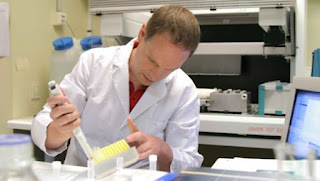A new genetic test has been piloted by scientists at the University of Antwerp that will ultimately make it possible to rapidly screen all known deafness genes to give a far more accurate diagnosis of the cause of a hearing loss.
The new test will help parents of a deaf child understand the chances of future siblings also being born deaf. The findings, published today in the American Journal of Medical Genetics, show that by screening just 34 known deafness genes, an accurate diagnosis could be given in roughly half the cases.
The majority of childhood deafness is inherited and knowing the gene responsible can be incredibly important for parents who want to know the likelihood of subsequent children inheriting deafness. Knowing the cause of a child's deafness can also make it easier to predict how their hearing loss may change over time and help choose the most appropriate treatment or method of communication. More here.





